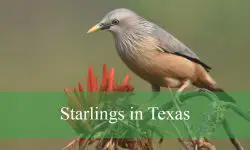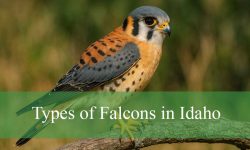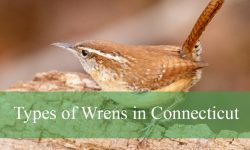Florida’s warm, diverse habitats make it a haven for both resident and migratory birds, and while the American Robin is the most familiar species, the Sunshine State occasionally hosts several rare and tropical robin-like thrushes. These birds belong to the same family, Turdidae, and share similar traits such as round bodies, upright postures, and melodious songs. From winter flocks of American Robins to unexpected tropical visitors, Florida offers exciting opportunities for birdwatchers to spot these beautiful birds throughout the year.
Below are the five types of robins recorded in Florida, ranging from the widespread American Robin to a few remarkable vagrants that wander north from Mexico and Central America.
Different Types of Robins Found in Florida
American Robin (Turdus migratorius)
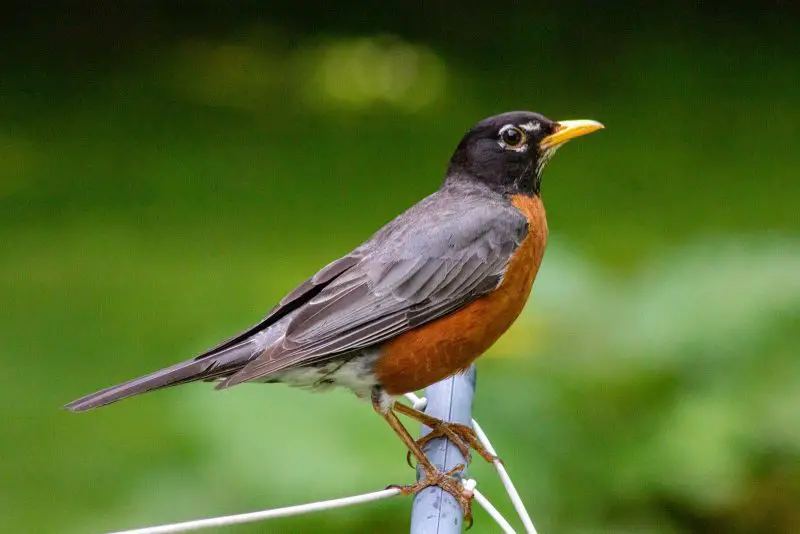
The American Robin is the most widespread and abundant robin species in Florida and across North America. It is easily recognized by its bright orange-red breast, gray-brown upperparts, and white eye ring. Adult males tend to be more vividly colored, while females are slightly paler. Their strong yellow bills and confident upright stance make them one of the most familiar backyard birds during the cooler months in Florida.
American Robins are winter visitors to most of Florida. They arrive from northern states and Canada during late fall (October or November) and remain through early spring (March or April). During this period, they gather in large flocks that can number in the hundreds or even thousands, often seen flying over fields, foraging on lawns, or roosting in fruiting trees.
These robins have a varied diet, feeding mainly on earthworms, insects, and berries. In northern regions, they are commonly seen pulling worms from moist soil, but in Florida’s mild winter, they rely heavily on fruiting trees like hollies, cedars, and Brazilian pepper. This fruit-based diet allows them to survive comfortably even when insects are scarce.
The American Robin’s song is a rich, melodious whistle, often described as “cheerily, cheer up, cheerio.” Males sing most actively during early mornings and evenings in the breeding season, but even in Florida’s winter months, you may hear their soft calls and contact notes.
In Florida, they frequent parks, open fields, suburban lawns, and forest edges. North and central Florida experience large winter populations, particularly around Gainesville, Ocala National Forest, and Paynes Prairie Preserve, while southern Florida may see smaller flocks or transient individuals.
Rufous-backed Robin (Turdus rufopalliatus)
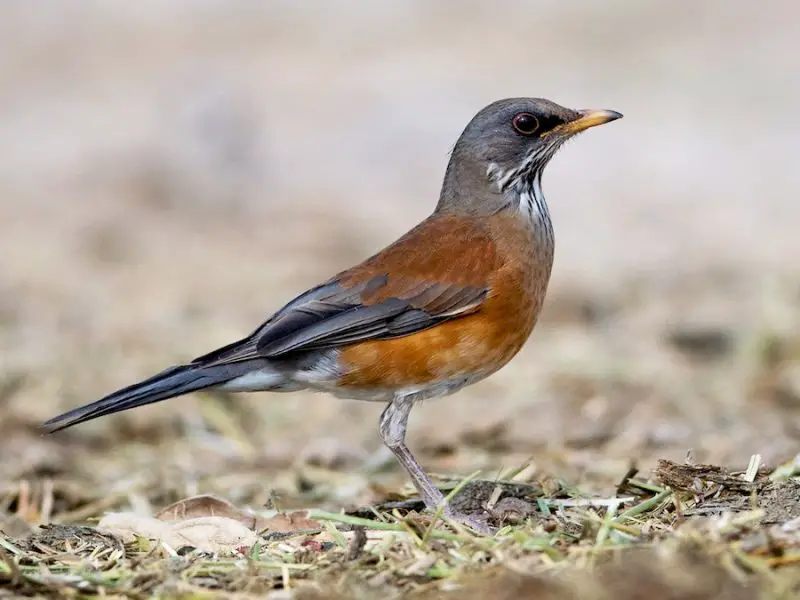
The Rufous-backed Robin is a rare and exciting visitor to Florida, typically found much farther south in Mexico and Central America. It closely resembles the American Robin but can be distinguished by its reddish-brown back and wings, white-streaked throat, and grayish head. Its breast is also orange-red but often deeper in tone and bordered by warm brown tones on the sides.
Occasional sightings of Rufous-backed Robins have been reported in the southeastern United States, especially after strong storm systems or during irregular migration patterns. In Florida, confirmed reports are exceptionally rare, but when one appears, it often attracts birders from all over the state. Most sightings occur in southern Florida during late fall or early winter.
This species inhabits woodlands, shady gardens, and tropical forests, where it forages for insects, small invertebrates, and berries. It prefers semi-open habitats with dense vegetation for cover and nesting. When foraging, the Rufous-backed Robin hops on the ground, turning leaves to find food, similar to the American Robin’s behavior.
Its song is melodious and flute-like, softer than that of the American Robin, with a series of rising and falling phrases. Calls are also gentler and less abrupt. These vocalizations make it easy to distinguish from more common thrushes if heard closely.
Because this species is so rare in the U.S., a Rufous-backed Robin sighting in Florida is often considered a once-in-a-lifetime opportunity. Most individuals are thought to be vagrants blown off course during migration or dispersal. Birders should keep an eye on berry-laden trees or quiet woodland parks, especially in Miami-Dade and Collier Counties, where the state’s tropical climate makes such appearances possible.
Clay-colored Thrush (Turdus grayi)
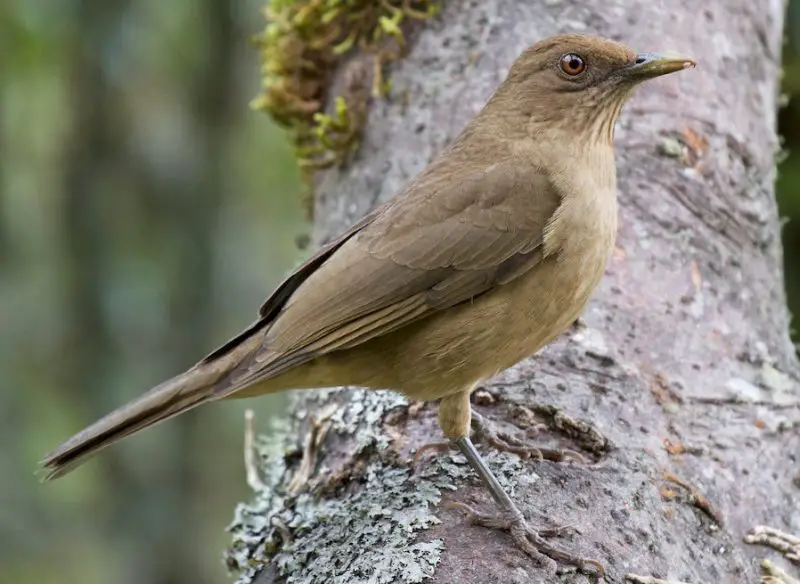
Formerly known as the Clay-colored Robin, this species is another tropical thrush that occasionally wanders into Florida from Central America. It’s the national bird of Costa Rica and is admired for its beautiful voice. Though plain in appearance, the Clay-colored Thrush has a certain elegance—its warm brown upperparts, paler underparts, and subtle yellowish eye ring give it a soft, earthy beauty.
In Florida, the Clay-colored Thrush is considered an accidental visitor, typically recorded in southern Florida or the Florida Keys. Sightings are very rare but not unprecedented, often occurring during winter when birds may disperse northward. The warm tropical and subtropical gardens of South Florida mimic their native environment, allowing short-term survival for lost individuals.
This species thrives in humid woodlands, coffee plantations, and shaded parks. It forages mostly on the ground for earthworms, snails, and fallen fruits. Its diet also includes figs, berries, and small insects, which are abundant in the Florida ecosystem. Like other robins, it uses a “hop-stop” movement while searching for food, pausing frequently to listen for underground prey.
The Clay-colored Thrush’s song is among the most beautiful in the thrush family—a soft, flute-like melody delivered at dawn and dusk. In Central America, it’s often heard singing during the rainy season, signaling the start of new growth. In Florida, its song, if heard, would be unmistakable for birders familiar with robin-like tones.
Because of its resemblance to the American Robin, inexperienced observers may overlook this bird. However, careful observation of its uniform brown plumage and lack of orange breast distinguishes it from true robins. A confirmed Clay-colored Thrush in Florida is a rare treat for dedicated birdwatchers and often makes headlines in the local birding community.
White-throated Thrush (Turdus assimilis)
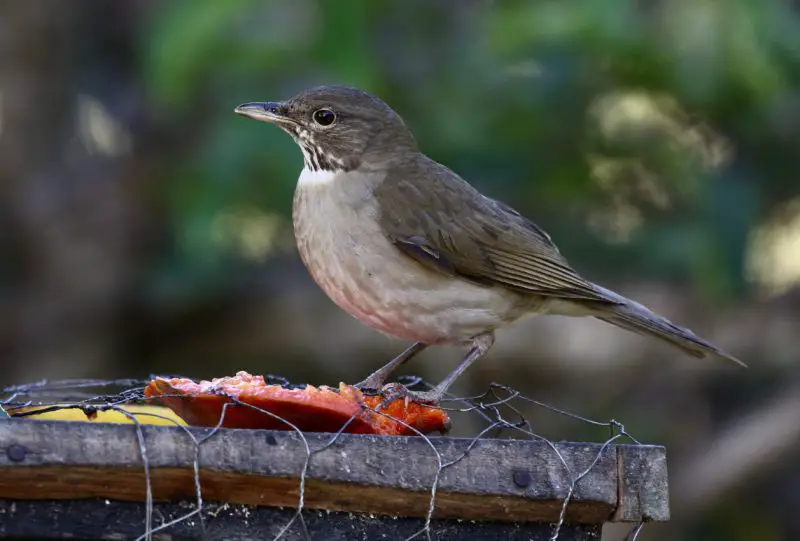
The White-throated Thrush—sometimes called the White-throated Robin—is one of the rarest tropical thrushes ever recorded in Florida. Native to Mexico and Central America, it is occasionally seen in the southernmost parts of the state during irregular migration events. Its appearance is striking yet subtle, featuring a dark grayish-brown back, a white throat and belly, and fine streaking on the chest.
This species prefers humid mountain forests, shaded ravines, and dense understory vegetation in its native range. In Florida, when it appears, it tends to stay near wooded areas with fruiting trees or thickets, such as in the Everglades or coastal preserves. Its diet consists mainly of insects, snails, and berries, and it often forages quietly near the ground.
White-throated Thrushes are shy and elusive, often remaining hidden within thick foliage. They are most active in the early morning and late afternoon. Their behavior resembles that of other thrushes—hopping on the ground, flicking leaves, and occasionally perching on low branches to sing.
The song of the White-throated Thrush is rich and flute-like, with a series of clear, descending notes. It’s not as loud as the American Robin’s song but carries a soft, mournful beauty. Hearing this bird sing in Florida would be a rare and remarkable experience.
There are only a few documented records of this species in the United States, and Florida represents the northeastern edge of its possible wandering range. Any confirmed sighting typically draws widespread attention among ornithologists and bird photographers alike.
Varied Thrush (Ixoreus naevius)
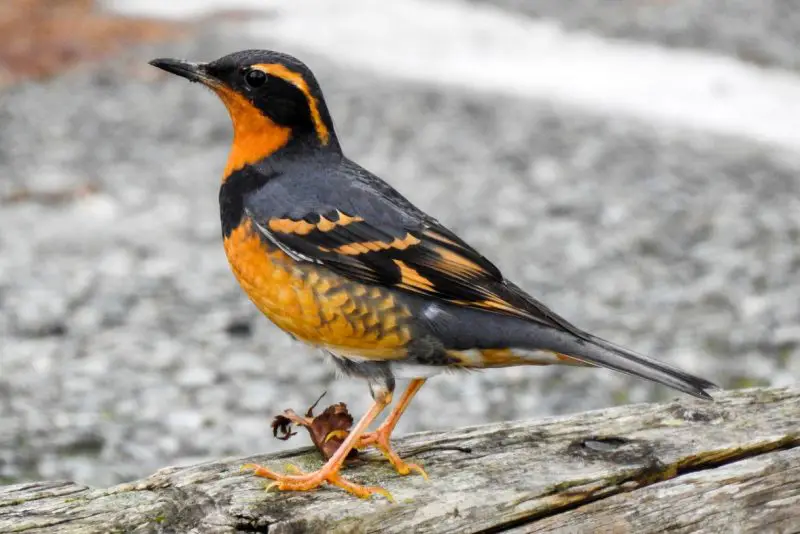
The Varied Thrush is one of the most visually stunning robin-like birds occasionally found in Florida, though its natural home lies in the forests of the Pacific Northwest. It is instantly recognizable by its deep orange breast and face, crossed by a distinct black breast band, and blue-gray upperparts. The combination of bold colors and sharp contrast gives it a regal appearance that stands out even among robins.
This species breeds in coniferous forests from Alaska to northern California and winters in lower elevations and occasionally in the eastern United States. Rare individuals have reached Florida, usually during winter, likely carried by weather systems or disoriented during migration. Such records are extremely scarce, but each one excites the birding community.
Varied Thrushes are shy, forest-loving birds that spend much of their time in thick understory and quiet wooded areas. They feed on insects, berries, and seeds, foraging by flipping leaf litter and searching under shrubs. During winter in Florida, they might be found in wooded parks or gardens, especially where berries are abundant.
Their song is one of the most haunting in North America—a series of single, drawn-out, ethereal whistles on different pitches. It often echoes through foggy forests in the Pacific Northwest, giving an almost mystical atmosphere. In Florida, hearing such a song would be an extraordinary experience for any birder.
Because of their limited movement eastward, a Varied Thrush sighting in Florida is an exceptional ornithological event. They have been recorded a handful of times, mainly in northern parts of the state. Observers should watch for this robin-like bird during cold winters following strong storms from the west.
Best Time and Places to See Robins in Florida
The best time to see robins in Florida is from October through March, when vast flocks of American Robins arrive to spend the winter. During these months, lawns, golf courses, and open parks come alive with foraging robins. As temperatures warm, they begin to migrate north, disappearing almost entirely by late spring.
For rare tropical robins and thrushes, the best chance for sightings is in southern Florida, particularly Miami-Dade, Collier, Monroe, and the Florida Keys. Areas rich in fruiting trees—like fig, mulberry, and holly—often attract stray individuals. Everglades National Park, Corkscrew Swamp Sanctuary, and Fairchild Tropical Botanic Garden are well-known birding sites where unusual sightings have occurred.
Final Thoughts
While only one true robin—the American Robin—is common in Florida, the state’s unique geography allows for occasional appearances of tropical and western thrushes that resemble robins in size, shape, and song. For birders, this mix of familiar and exotic species adds excitement to the winter months.
From the cheerful whistles of migrating robins to the rare melodies of Rufous-backed or White-throated Thrushes, Florida’s skies offer a rich and unpredictable birding experience. Keeping binoculars handy and visiting fruiting trees or forest edges during migration seasons could reward you with a glimpse of these captivating birds.
FAQs About Robins in Florida
Are there robins year-round in Florida?
No, robins are not typically year-round residents in Florida. American Robins migrate to Florida during late fall through early spring (October to March), when northern climates become too cold. They return north to breed in spring. However, a few individuals may linger in northern Florida if conditions remain mild and food is abundant.
What kind of robins live in Florida?
The American Robin (Turdus migratorius) is the only common and widespread robin found in Florida. However, rare or accidental visitors such as the Rufous-backed Robin, Clay-colored Thrush, White-throated Thrush, and Varied Thrush have also been recorded in the state. These species resemble robins in shape and behavior but are uncommon tropical or western thrushes.
Where can I see robins in Florida?
The best places to see robins in Florida include Paynes Prairie Preserve State Park, Ocala National Forest, Lake Kissimmee State Park, and Everglades National Park. Robins often gather in parks, open fields, and lawns where they feed on worms and berries. In southern Florida, fruiting trees in gardens and nature reserves attract both robins and rare tropical thrushes.
Do robins migrate through Florida?
Yes. Florida lies along a major wintering route for American Robins. Huge flocks arrive from the northern U.S. and Canada in late fall. These birds spend several months feeding on berries and fruits before migrating north again in early spring. Some may pass through quickly, while others overwinter in the state’s forests and suburbs.
What do robins eat in Florida?
In Florida, robins primarily eat earthworms, insects, and berries. During winter, when insects are less available, they rely heavily on fruit-bearing trees such as holly, cedar, and Brazilian pepper. Robins forage on the ground, hopping and listening for movement, or feed directly from berry clusters in shrubs and trees.
Are there rare robins or thrushes seen in Florida?
Yes. Florida occasionally hosts rare tropical thrushes like the Rufous-backed Robin, Clay-colored Thrush, and White-throated Thrush, as well as western wanderers like the Varied Thrush. These rare appearances are usually tied to storms, strong winds, or unusual migration patterns. Sightings are most often reported in South Florida and the Florida Keys.
When is the best time to see robins in Florida?
The best time to observe robins in Florida is between October and March. During these months, American Robins form massive feeding flocks that move across the state, especially in north and central Florida. For birders hoping to see rare species, late fall and winter in South Florida offer the best chances.
Do robins nest in Florida?
Most robins seen in Florida are winter visitors, so they typically do not breed in the state. However, in northern Florida, small numbers of American Robins may nest in early spring if suitable habitats—such as wooded areas and open fields—are available. Nests are built with grass and mud, often placed on tree branches or human structures.
What’s the difference between a robin and a thrush?
Robins belong to the thrush family (Turdidae), so they are actually types of thrushes. The American Robin is the largest and most familiar thrush in North America. Other thrushes, such as the Clay-colored Thrush and White-throated Thrush, share similar habits but lack the robin’s bright orange breast. All of them have melodious, flute-like songs.
Why do so many robins appear suddenly in winter?
Large flocks of robins arrive in Florida during seasonal migrations. As northern food sources dwindle, robins move south in search of fruiting trees. They may suddenly appear in large numbers, feeding on berries, then vanish as they continue moving through. This sudden abundance is a normal part of their migratory cycle.

